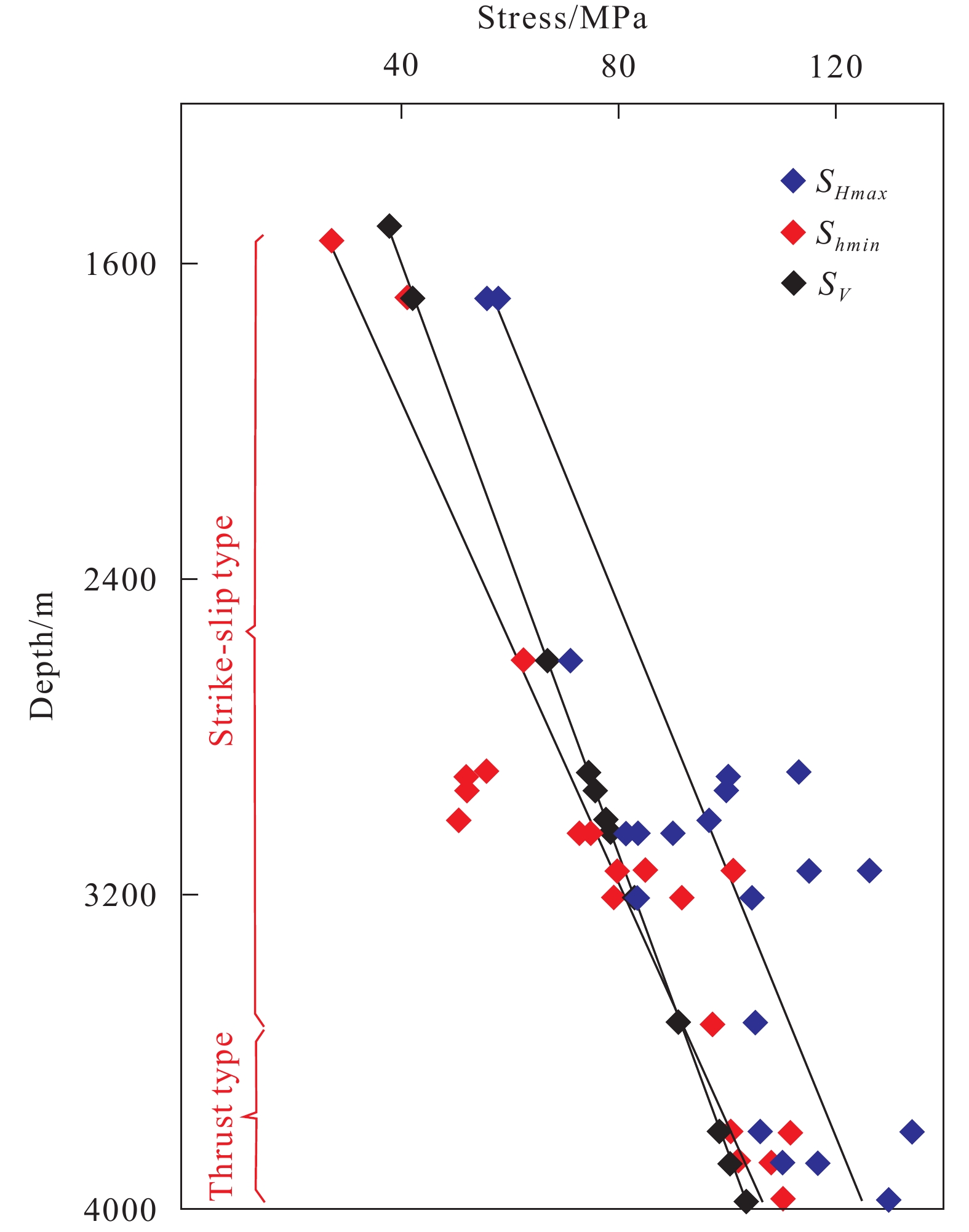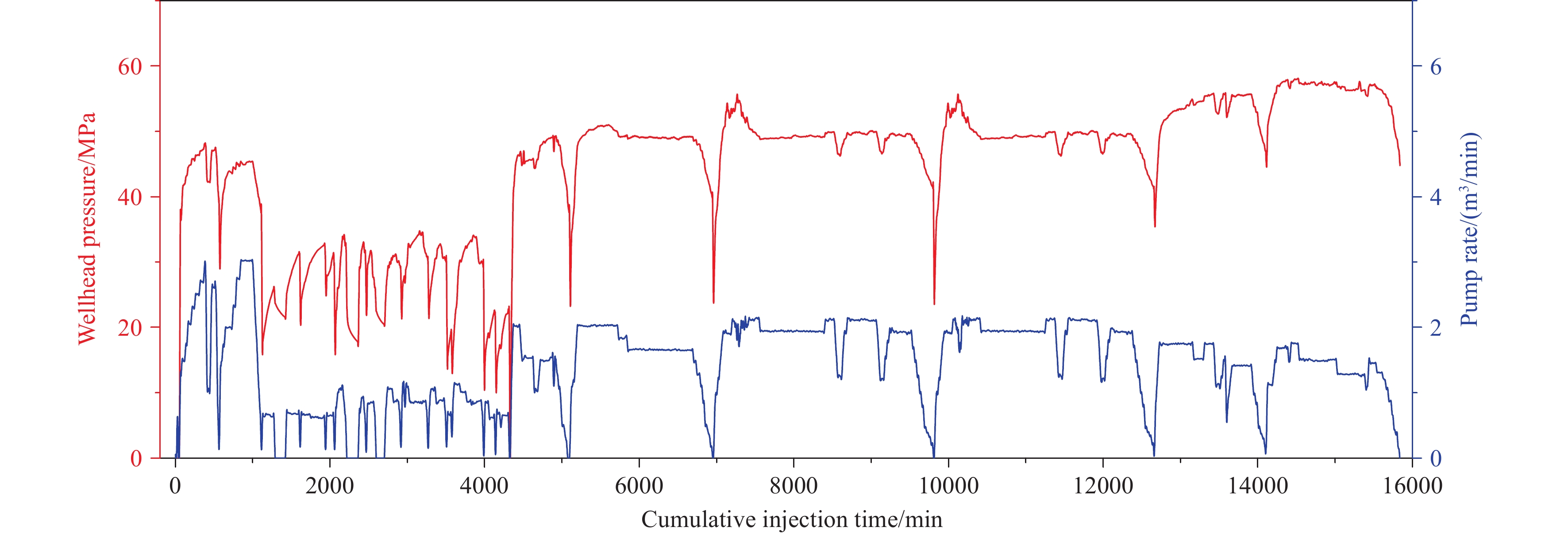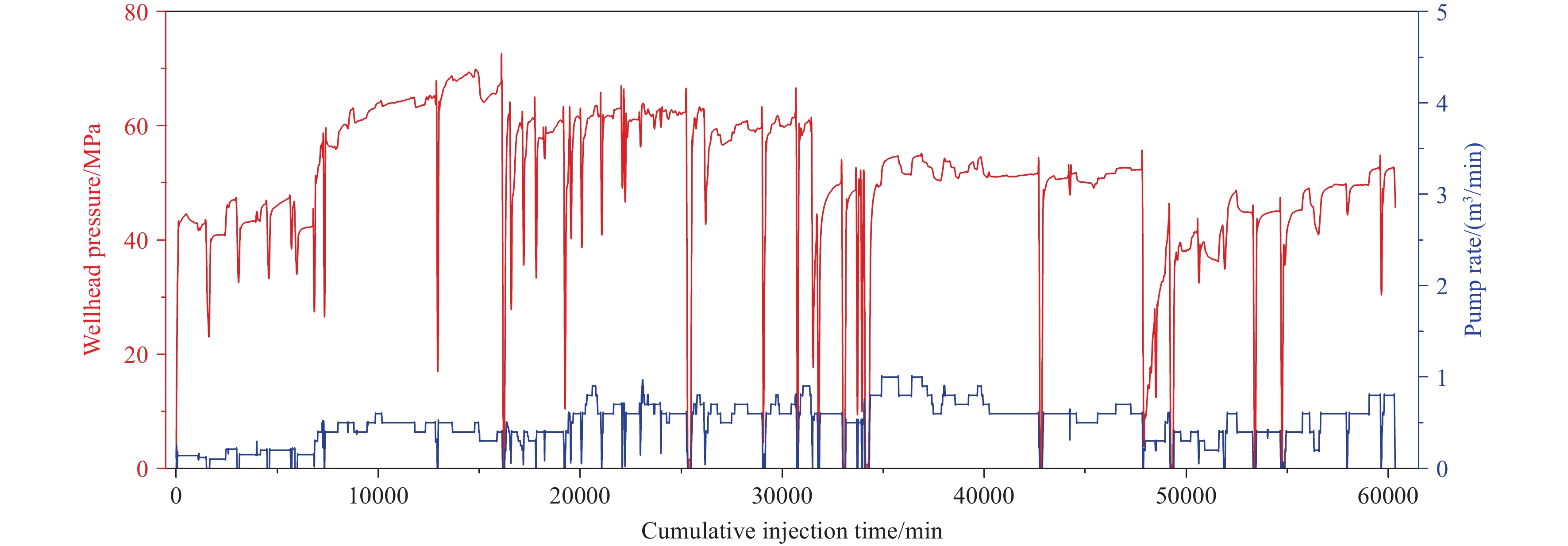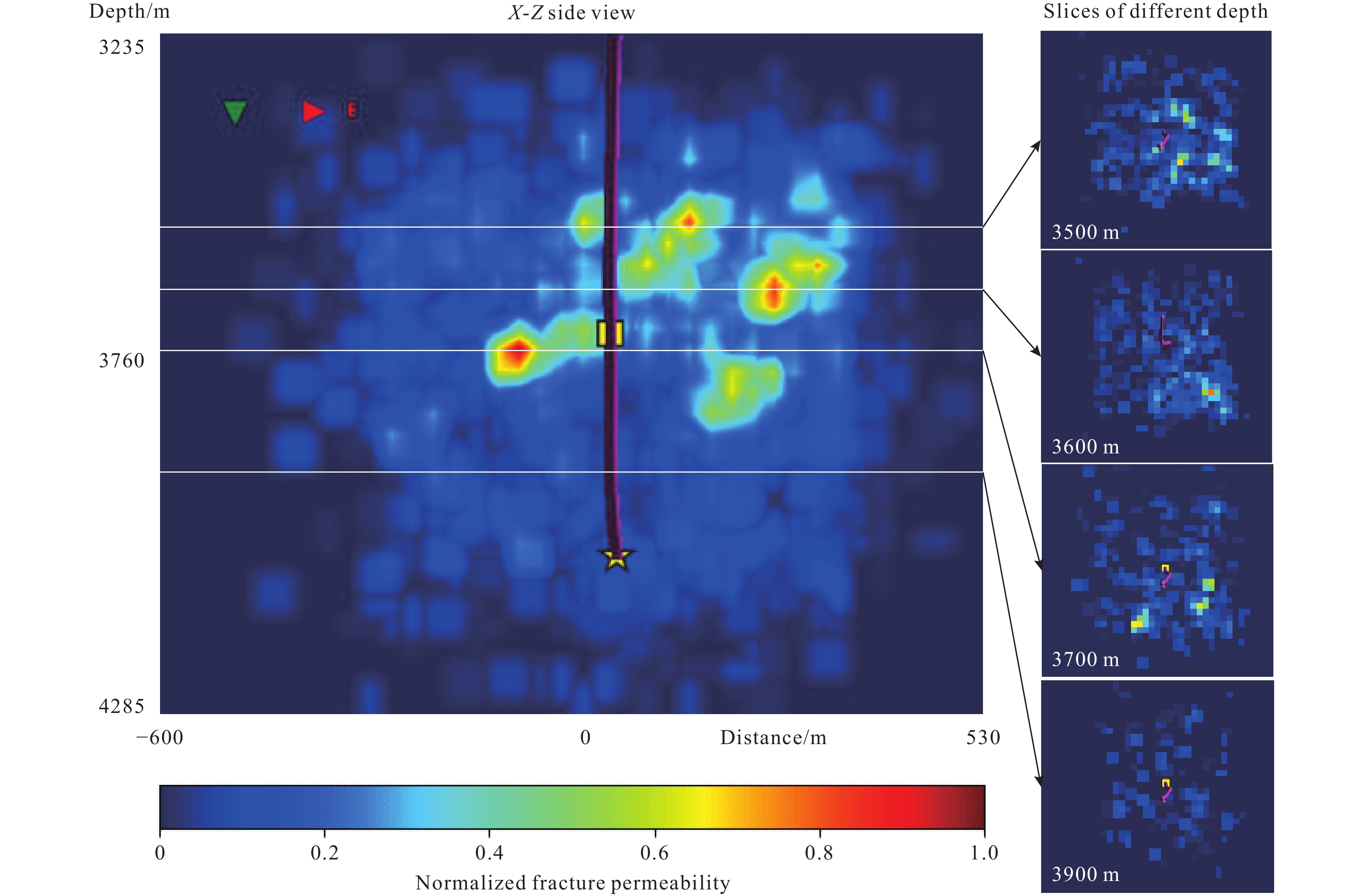| Citation: | Er-yong Zhang, Dong-guang Wen, Gui-ling Wang, Wei-de Yan, Wen-shi Wang, Cheng-ming Ye, Xu-feng Li, Huang Wang, Xian-chun Tang, Wei Weng, Kuan Li, Chong-yuan Zhang, Ming-xing Liang, Hong-bao Luo, Han-yue Hu, Wei Zhang, Sen-qi Zhang, Xian-peng Jin, Hai-dong Wu, Lin-you Zhang, Qing-da Feng, Jing-yu Xie, Dan Wang, Yun-chao He, Yue-wei Wang, Zu-bin Chen, Zheng-pu Cheng, Wei-feng Luo, Yi Yang, Hao Zhang, En-lai Zha, Yu-lie Gong, Yu Zheng, Chang-sheng Jiang, Sheng-sheng Zhang, Xue Niu, Hui Zhang, Li-sha Hu, Gui-lin Zhu, Wen-hao Xu, Zhao-xuan Niu, Li Yang, 2022. The first power generation test of hot dry rock resources exploration and production demonstration project in the Gonghe Basin, Qinghai Province, China, China Geology, 5, 372-382. doi: 10.31035/cg2022038 |
The first power generation test of hot dry rock resources exploration and production demonstration project in the Gonghe Basin, Qinghai Province, China
-
Abstract
Hot dry rock (HDR) is a kind of clean energy with significant potential. Since the 1970s, the United States, Japan, France, Australia, and other countries have attempted to conduct several HDR development research projects to extract thermal energy by breaking through key technologies. However, up to now, the development of HDR is still in the research, development, and demonstration stage. An HDR exploration borehole (with 236 °C at a depth of 3705 m) was drilled into Triassic granite in the Gonghe Basin in northwest China in 2017. Subsequently, China Geological Survey (CGS) launched the HDR resources exploration and production demonstration project in 2019. After three years of efforts, a sequence of significant technological breakthroughs have been made, including the genetic model of deep heat sources, directional drilling and well completion in high-temperature hard rock, large-scale reservoir stimulation, reservoir characterization, and productivity evaluation, reservoir connectivity and flow circulation, efficient thermoelectric conversion, monitoring, and geological risk assessment, etc. Then the whole-process technological system for HDR exploration and production has been preliminarily established accordingly. The first power generation test was completed in November 2021. The results of this project will provide scientific support for HDR development and utilization in the future.
-

-
References
Ayling BF, Hogarth RA, Rose PE. 2016. Tracer testing at the Habanero EGS site, central Australia. Geothermics, 63, 15–26. doi: 10.1016/j.geothermics.2015.03.008. Baisch S, Rothert E, Stang H, Voros R, Koch C, McMahon A. 2015. Continued geothermal reservoir stimulation experiments in the Cooper Basin (Australia). Bulletin of the Seismological Society of America, 105(1), 198–209. doi: 10.1785/0120140208. Chen XJ, Yun XR, Lei M, Cai ZH, Zhang SS, Liu RH, Li YB, He BZ. 2020. Petrogenesis of Middle Triassic granite association in the Gonghe basin, Qinghai: Constraints from geochemistry, U-Pb ages and Hf isotopic. Acta Petrologica Sinica, 36(10), 3152–3170 (in Chinese with English abstract). doi: 10.18654/1000-0569/2020.10.13. Feng YF, Zhang XX, Zhang B, Liu JT, Wang YG, Jia DL, Hao LR, Kong ZY. 2018. The geothermal formation mechanism in the Gonghe Basin: Discussion and analysis from the geological background. China Geology, 1, 331–345. doi: 10.31035/cg2018043. Genter A, Evans K, Nicolas C, Fritsch D, Sanjuan B. 2010. Contribution of the exploration of deep crystalline fractured reservoir of Soultz to the knowledge of enhanced geothermal systems (EGS). Comptes Rendus Geoscience, 342(7‒8), 502‒516. doi: 10.1016/j.crte.2010.01.006. Grigoli F, Cesca S, Rinaldi AP, Manconi A, López-Comino JA, Clinton JF, Westaway R, Cauzzi C, Dahm T, Wiemer S. 2018. The November 2017 Mw5. 5 Pohang earthquake:A possible case of induced seismicity in South Korea. Science, 360, 1003–1006. doi: 10.1126/science.aat2010. Jia LY, Hu DG, Wu HH, Zhao XT, Chang PY, You BJ, Zhang M, Wang CQ, Ye MN, Wu ZQ, Liang XZ. 2017. Yellow River terrace sequences of the Gonghe-Guide section in the northeastern Qinghai-Xizang: Implications for plateau uplift. Geomorphology, 295, 323–336. doi: 10.1016/j.geomorph.2017.06.007. Kelkar S, Giday WG, Rehfeldt K. 2016. Lessons learned from the pioneering hot dry rock project at Fenton Hill, USA. Geothermics, 63, 5–14. doi: 10.1016/j.geothermics.2015.08.008. Kraal KO, Ayling BF, Blake K, Hackett L, Perdana T, Stacey R. 2021. Linkages between hydrothermal alteration, natural fractures, and permeability: Integration of borehole data for reservoir characterization at the Fallon FORGE EGS site, Nevada, USA. Geothermics, 89, 101946. doi: 10.1016/j.geothermics.2020.101946. Kwiatek G, Saarno T, Ader T, Bluemle F, Bohnhoff M, Chendorain M, Dresen G, Heikkinen P, Kukkonen I, Leary P, Leonhardt M, Malin P, Martínez-Garzón P, Passmore K, Passmore P, Valenzuela S, Wollin C. 2019. Controlling fluid-induced seismicity during a 6. 1-km-deep geothermal stimulation in Finland. Science Advances, 5(5), 1–11. doi: 10.1126/sciadv.aav7224. Lu SM. 2018. A global review of enhanced geothermal system (EGS). Renewable and Sustainable Energy Reviews, 81(2), 2902–2921. doi: 10.1016/j.rser.2017.06.097. Monsees AC, Busch B, Schöner N, Hilgers C. 2020. Rock typing of diagenetically induced heterogeneities-A case study from a deeply-buried clastic Rotliegend reservoir of the Northern German basin. Marine and Petroleum Geology, 113, 104163. doi: 10.1016/j.marpetgeo.2019.104163. Norbeck JH, McClure MW, Horne RN. 2018. Field observations at the Fenton Hill enhanced geothermal system test site support mixed-mechanism stimulation. Geothermics, 74, 135–149. doi: 10.1016/j.geothermics.2018.03.003. Parker R. 1999. The Rosemanowes HDR project 1983‒1991. Geothermics, 28(4‒5), 603‒615. doi: 10.1016/S0375-6505(99)00031-0. Rodrigues NEV, Green ASP, Barley R. 1995. Modelling tracer tests in the Rosemanowes HDR reservoir. Geothermal, 24(3), 375–384. doi: 10.1016/0375-6505(95)00015-I. Richards HG, Savage D, Andrews JN. 1992. Granite-Water reactions in an experimental hot dry rock geothermal reservoir, Rosemanowes test site, Cornwall, U K. Applied Geochemistry, 7(3), 193–222. doi: 10.1016/0883-2927(92)90038-5. Sigfússon B, Uihlein A. 2015. Technology, market and economic aspects of geothermal energy in Europe. 2015 European Commission-Joint Research Centre (JRC) Geothermal Energy Status Report. doi: 10.2790/959587. Song Y, Lee TJ, Jeon J, Yoon WS. 2015. Background and progress of the Korean EGS pilot project. Proceedings World Geothermal Congress 2015. Melbourne, International Geothermal Association. Su Q, Xie H, Yuan DY, Zhang HP. 2017. Along-strike topographic variation of Qinghai Nanshan and its significance for landscape evolution in the northeastern Xizang Plateau. Journal of Asian Earth Sciences, 147(oct.1), 226–239. doi: 10.1016/j.jseaes.2017.07.019. Tester JW, Anderson BJ, Bachelor AS, Blackwell, DD, DiPippo, R, Drake E. 2006. The future of geothermal energy: Impact of enhanced geothermal systems (EGS) on the United States in the 21st century. Boston, USA, Massachusetts Institute of Technology, 1‒34. Tenma N, Yamaguchi T, Zyvoloski G. 2008. The Hijiori Hot Dry Rock test site, Japan: Evaluation and optimization of heat extraction from a two-layered reservoir. Geothermics, 37(1), 19–52. doi: 10.1016/j.geothermics.2007.11.002. Tang XC, Wang GL, Ma Y, Zhang DL, Liu Z, ZhaoX, Cheng TJ. 2020. Geological model of heat source and accumulation for geothermal anomalies in the Gonghe basin, northeastern Xizang Plateau. Acta Geologica Sinica, 94(7), 2052–2065 (in Chinese with English abstract). doi: 10.19762/j.cnki.dizhixuebao.2020221. Wang Y, Yang JF. 2018. Progress and enlightenments in exploration and exploitation of hot dry rock resources in China and Abroad. The 6th Academic Conference of Geology Resource Management and Sustainable Development, Beijing China. Wang GL, Zhang W, Ma F, Lin WJ, Liang JY, Zhu X. 2018. Overview on hydrothermal and hot dry rock researches in China. China Geology, 1, 273–285. doi: 10.31035/cg2018021. Wang JY, hu SB, Pang ZH, He LJ, Zhao P, Zhu CQ, Rao S, Tang XY, Kong YL, Luo L, Li WW. 2012. Estimate of geothermal resources potential for hot dry rock in the continental area of China. Science and Technology Review, 30(32), 25–31 (in Chinese with English abstract). doi: 10.3981/j.issn.1000-7857.2012.32.003. Wu H, Fu PC, Frone Z, White MD, Ajo-Franklin JB, Morris JP, Knox HA, Schwering PC, Strickland CE, Roberts BQ, Vermeul VR, Mattson ED, Ingraham MD, Kneafsey TJ, Blankenship DA. 2021. Geothermics, 91, 102254. doi: 10.1016/j.geothermics.2021.102254. Wyborn D. 2010. Update of development of the geothermal field in the granite at Innamincka, South Australia. Proceedings World Geothermal Congress, Bali Indonesia. Xu TF, Hu ZX, Li ST, Jiang ZJ, Hou ZY, Li FY, Liang X, Feng B. 2018. Enhanced geothermal system: international progresses and research status of China. Acta Geologica Sinica 92(9), 1936‒1947 (in Chinese with English abstract). doi: 10.3969/j.issn.0001-5717.2018.09.012. Yun XR, Chen XJ, Cai ZH, He BZ, Zhang SS, Lei M, Xiang H. 2020. Preliminary study on magmatic emplacement and crystallization conditions and deep structure of hot dry rock in the northeastern Gonghe basin, Qinghai Province. Acta Petrologica Sinica, 36(10), 3171–3191 (in Chinese with English abstract). doi: 10.18654/1000-0569/2020.10.14. Zhang SQ, Yan WD, Li DP, Jia XF, Zhang SS, Li ST, Fu L, Wu HD, Zeng ZF, Li ZW, Mu JQ, Cheng ZP, Hu LS. 2018. Characteristics of geothermal geology of the Qiabuqia HDR in Gonghe basin, Qinghai Province. Geology in China, 45(6), 1087–1102 (in Chinese with English abstract). doi: 10.12029/gc20180601. -
Access History

-
Figure 1.
Comprehensive chart of the lithology, reservoir temperature, and temperature gradients logs in the study area.
-
Figure 2.
Geostress profile of the PTS using the ASR method.
-
Figure 3.
Formation microscanner image of GH-01(a), GH-02(b), and GH-03(c) among the reservoir part.
-
Figure 4.
The site view of HDR Exploration and production Demonstration Project in the Gonghe basin, China.
-
Figure 5.
Schematic diagram of the trajectory of HDR well Group.
-
Figure 6.
Injection pressure, rate, and volume curves during the reservoir stimulation.
-
Figure 7.
Injection rate and pressure curves during the circulation.
-
Figure 8.
Microseismic events during the large-scale stimulation at different stages. The figures sequentially show the different stages of microseismic development over time. The event points from large to small represent the energy from strong to weak.
-
Figure 9.
The liquid sweep range by the time-frequency electromagnetic method after stimulation in 2021 (A_relative: Abnormal change of relative amplitude).
-
Figure 10.
Different depth slices of hydraulic fracture permeability from the inversion of micro-seismic data

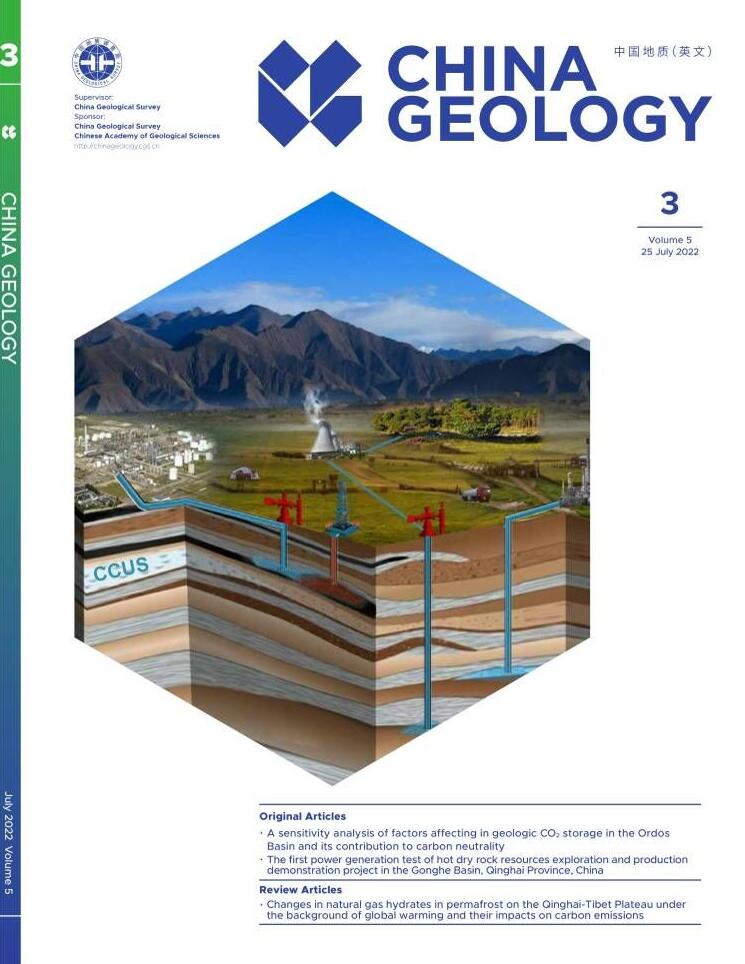



 DownLoad:
DownLoad:
